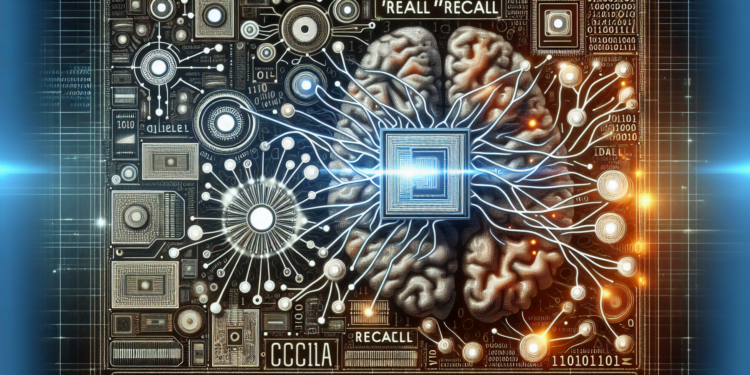Artificial Intelligence and the Recall Paradigm: Delving into Pattern Recognition Efficiency
Artificial intelligence (AI) has skyrocketed from its early days of expert systems and search algorithms. A critical metric in the evaluation of AI systems, specifically in machine learning and pattern processing, is recall, or sensitivity. This indicator is crucial when the costs of false negatives are significantly high, such as in medical diagnosis or fraud detection.
The Intrinsic Theory of Recall
Recall is defined as the proportion of true positives to the total number of actual positive cases, meaning it measures the model’s ability to identify all relevant instances. Mathematically, it is expressed as TP/(TP+FN), where TP represents true positives and FN represents false negatives.
Advances in Algorithms and Increased Recall
The past few years have witnessed significant innovations in algorithms that maximize recall. Deep Neural Network (DNN) models, for example, have improved the precise detection of complex patterns at scales previously unimaginable. Advances in unsupervised learning and reinforcement techniques have facilitated the development of systems with greater capabilities to recognize unlabelled anomalies.
The Impact of Class Imbalance on Recall
A technical challenge in maximizing recall is the issue of class imbalance. Data balancing techniques, like oversampling the minority class or undersampling the predominant class, have been key to training more balanced models. The SMOTE (Synthetic Minority Over-sampling Technique) algorithm and its variants have been seminal, synthesizing new examples in underrepresented classes to improve detection.
High-Impact Practical Applications
In the realm of precision oncology, models with high recall have succeeded in detecting cancer cells at early stages with unprecedented accuracy. On the other hand, in the field of cybersecurity, AI-based systems with high recall can identify elusive phishing attacks and malware, protecting critical infrastructures.
Comparison with Previous Works
Compared to traditional machine learning approaches based on SVM (Support Vector Machines) or decision trees, which focused on maximizing precision even at the expense of recall, modern techniques prioritize a balance. Ensemble models, which combine predictions from multiple algorithms, have shown remarkable effectiveness in improving both indicators, including recall.
Future Directions for Innovation
An emerging era is projected where Generative Adversarial Networks (GANs) will be employed to generate highly sophisticated training data that improves the recall of AI systems in domains where data are scarce or highly private. Explainable AI (XAI) promises to provide insights into maximizing recall without sacrificing operational transparency.
Relevant Case Studies
- Medical Diagnosis with Deep Learning: A convolutional neural network (CNN) model that diagnoses diabetic retinopathy with a recall of 98%, thus minimizing the risk of missing positive diagnoses.
- Financial Fraud and Recurrent Neural Networks (RNNs): An RNN-based system achieves a recall of 95% in detecting fraudulent transactions, employed by leading financial institutions.
Conclusion
Recall has established itself as a decisive indicator in the evaluation of AI systems, particularly in contexts where the cost of not detecting a positive is exorbitant. The continuous evolution of AI technology and development focused on this parameter herald a new era of practical applications that will not only increase operational efficiency but also have the potential to save lives and safeguard security at an unprecedented level.






















